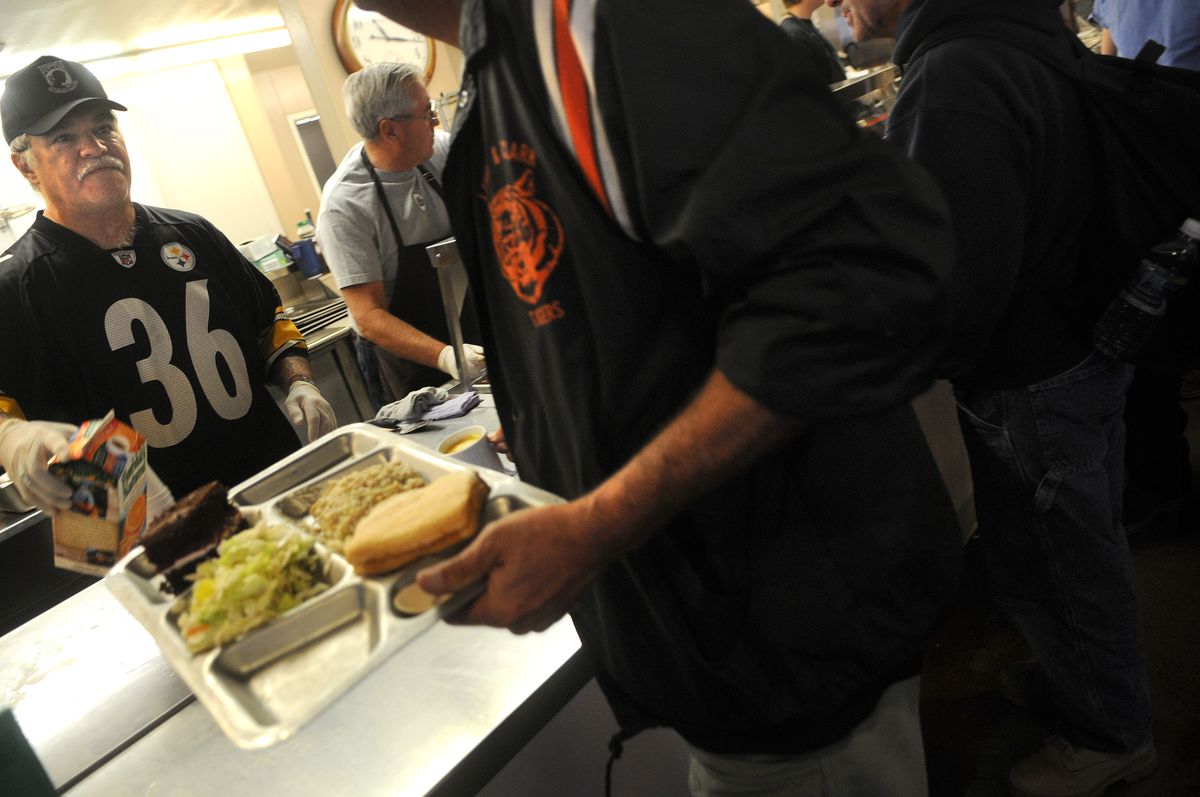House of Charity marks 50 years
Downtown facility provides food, shelter

For half a century, many of Spokane’s poorest residents have known where their next meals would come from, thanks to the House of Charity.
The shelter, celebrating its 50th anniversary, was founded in a boarding house on Havermale Island in what is now Riverfront Park. Its venue has changed, but its mission – “unconditional service to the poor,” according to Mary Ann Heskett, a director at Catholic Charities – has not.
But while the House of Charity still provides shelter to the homeless and food to the hungry – last year serving 2,721 people and preparing 70,053 meals – the needs the organization seeks to fill have changed.
In shelter director Ed McCarron’s early days as a volunteer, most of the organization’s clients were men in their 50s and 60s, many of whom had endured bitter divorces before dropping out of their families’ lives and largely out of society.
“Forgiveness is a big issue for these guys,” McCarron said. “Many of them have not been able to forgive and many of them have not been forgiven – society will not forgive them for their past.”
These days, the ranks of the homeless more often include the young, the mentally ill, the addicted. Many are victims of domestic violence.
The organization has responded to the needs, just as it has done for 50 years. What started as a daytime center has evolved. It now offers 108 beds to homeless men and feeds hundreds of men and women each day. It is staffed by 10 employees and nearly 300 volunteers.
It’s grown from humbler beginnings, as recounted by Haskett and a few other veterans of Catholic Charities who gathered this week in the Catholic Pastoral Center to talk about the history of one the city’s most venerable institutions for the poor.
In 1958, Brother Martin Groll came to Spokane at the invitation of Bishop Bernard Topel to establish a shelter like one he had opened in Minneapolis.
Groll “was very quick to spend your dollar, if you had one, but never on himself,” said Tom Pleas, a former Catholic Charities associate director and longtime volunteer.
Along with his fellow Brothers of Charity, Groll had what it takes to turn a dream into reality, according to a 1959 Spokesman-Review story by reporter Dick Gunderson:
“In his dream he saw the down-and-outers, the fellows from skid row, the forgotten. He saw them finding themselves. Folks took a liking to Brother Martin’s dream.”
The House of Charity remained at its first location, 526 N. Washington St., until 1972, when the city bought the property to clean up for Expo ’74.
“When it opened it was strictly a daytime operation,” said Monsignor Frank Bach, a former Catholic Charities director.
The second facility, 35 W. Trent Ave., served as a drop-in center until 1975, when it moved to “temporary” quarters in the old Volunteers of America building at 9 W. Main Ave., where it remained for 25 years.
A free clinic opened at the House of Charity in 1976 with the support of Sister Peter Claver, director of Sacred Heart Hospital, some emergency room nurses and a couple of doctors. As the state’s oldest free clinic, it still provides care to the indigent.
Not long after that, Pleas persuaded a young volunteer, Dan Hutchinson, to run the House of Charity for a couple of weeks.
Hutchinson, who ran the shelter from 1978 to 1995, was “the longest temporary employee I ever worked with,” Pleas said.
The city, eager to get homeless people off the streets at night, provided a grant to help fix up the building in 1979, Bach said. The facility offered 46 beds upstairs for men and about four for women, though it was not uncommon to make room for more women on the floor.
Beginning in 1981, the shelter began to get help from the Jesuit Volunteer Corps. Among the young volunteers was McCarron, who became the shelter’s director in 1995.
Under McCarron’s leadership, the House of Charity hired case managers and a mental health counselor who provide a variety of social services to the homeless.
In 2000, the House of Charity moved into its present quarters at Pacific Avenue and Browne Street. In 2001, it became the first agency in Eastern Washington to put the homeless directly into federally sponsored housing through its Hanson House program.
In 2006, the organization opened its sleeping program year-round.
“The hard work was getting directors like Hutchinson and McCarron to bring respect and to run the place,” Bach said.
“It is a difficult clientele and hard trying to remember they are God’s children sometimes.”